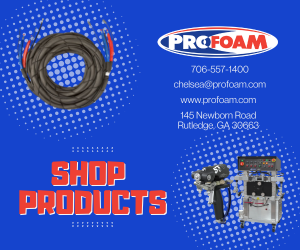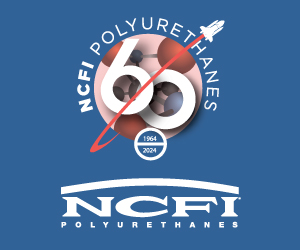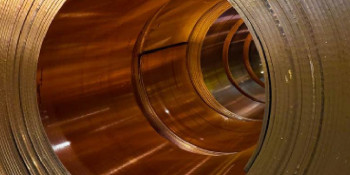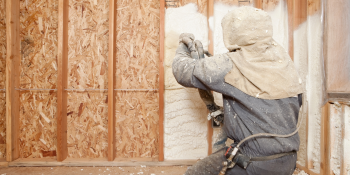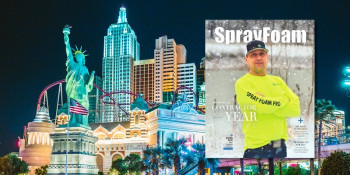Q&A Forums
Need a professional stamp for SPF in Washington Post New Topic | Post Reply
| Author | Comments |
|---|---|
|
Posted: Mar 23, 2009 08:06 PM
|
Need a professional stamp for SPF in Washington
Was my post too big?
|
|
Posted: Mar 23, 2009 08:07 PM
|
Sorry, I can't get my post to work |
|
Posted: Mar 23, 2009 08:10 PM
|
It’s a long post, but then, it’s a long story. I’m hoping to keep it from becoming an expensive story. I'm an owner/builder in Washington. I'm about halfway through building a small Insulated Concrete Form house. When I submitted my plans, the AHJ spent lots of time on the ICF aspect of the house and no time on the spray foam insulation in the roof. The rafters are now up (2x8 to allow for foam), the sheathing is on, and the roof is shingled. I'm dried in, but I thought that it would be great if I could get the SPF insulation in so that I could finish in a heated house. |
|
Posted: Mar 23, 2009 08:12 PM
|
I called for a special framing inspection so that I'd have it ok'd before the ridge, rafters, and bird-mouths were covered with foam. The inspector came and told me that unvented attics are not allowed in Washington. You could have knocked me over with a feather. I worked on a Habitat for Humanity house in 2004 that had an unvented SPF attic. The Washington GreenBuilt House of the Year for 2006 had an unvented attic. But, my inspector was right. Washington didn't adopt IRC 806.4. I got together all of my info (ES reports, Buildingscience.com studies, etc.) and submitted it to the AHJ to get an R104.11 approval for a design/material method not specifically approved by the code, but which meets all the code concerns. It was denied. The reason that it was denied (I was expecting a vapor barrier or ignition barrier justification) was that my shingles don't carry a full warranty on an unvented roof. It’s one of the companies that warranties on an unvented roof, but the warranty is reduced (although not reduced as much as if I sold the house. You have to wonder what, if anything, warranty lengths mean). The day that my request was denied, the Washington State Building Code Counsel voted on the issue of unvented roofs. They had held public hearings on the issues of flammability, vapor barriers, shingles, etc. One of the members noted that the shingle warranty issue was a "red herring." Even though a motion passed to amend the code in Washington to agree with the other 49 states, it doesn’t go into effect until June 1 of 2010. I contacted my AHJ and they agreed to look at my proposal again in light of the recent pending code change. I’ve contacted my foam installer and they’ve been in contact with the local area rep for the foam I was intending to use. The project is very small by new home standards and, although they’ve been helpful, I understand that they’re not anxious to drive 3 hours to my rural county seat to make a presentation to the AHJ on a $4,000 project. They have provided me with the information that they have used at for prior projects in Washington which have been allowed to use unvented attics. It is basically the same material that I have already submitted. I’m concerned that, since the easy answer is “no,” that will be what I’m going to hear again. The roof is on. No venting at the eave, no roof vents, no ridge vent, concrete gable ends with no gable vents, 7.5” bays for insulation. This isn’t something where I can just say, okay, I’ll change to filterglass instead of SPF. My read on the more legitimate objections to SPF by building inspectors is that filterglass has stamped right on it “R19” or whatever. It has kraft paper with tar on it for a vapor barrier. If installed by something with opposable thumbs, it passes code because that’s the way it has always been done. SPF is more complicated. What is the R value of the particular product? What is the perm rating of the product? What is the average thickness of the product as applied? What is the flame spread index of the product? Okay, by now you’re way past what the inspector wants to deal with. The big complaint at the Washington SBCC hearing was how is an inspector to know if it’s done right? That’s why I think that I need a design professional. Somebody with a stamp that can review my design, stamp it, maybe even visit the sight and stamp a report. Installed per code, check. Installed per manufacturer, check. Installed per whatever, check. I’ve put in a call to the rep wondering if they have a design person or can recommend one. I’m kind of surprised. When I went with ICF, the rep gave me the name of an architect/P.E. familiar with the product who could answer any AHJ questions. Where are these for SPF? Anybody have any recommendations, especially somebody with a WA stamp? Mark |
|
travis fails
Posted: Mar 25, 2009 07:22 PM
|
Will the foam suppler not help in anyway? Are you doing the work or a contractor? |
|
Gerry Wagoner
Posted: Mar 25, 2009 08:29 PM
|
Doesn't Washington building code have an "Alternative materials & Methods" section in it? As to the shingle warranty, the state has no right to enforce warranty upon a homeowner. They cannot dictate the type of roof, the color, or the resultant length of warranty. You can choose warranties from 5-years to 100-years and that is solely your choice. If they get stupid about it, a signed letter from the homeowner stating that he alone is liable for any warranty issues, should place the matter where it belongs -- in your hands. `oG |
|
Posted: Mar 26, 2009 12:26 PM
|
When I spoke with the AHJ, I mentioned the alternate materials and methods and was surprised that the official sounded like that was never done. When I spoke with the foam rep yesterday, he said some jurisdictions look at alternative methods and materials so often that they have a form available at the building dept. counter with a check list. You write a short description of the alternate method and then go down the list with a short explanation of how it meets or doesn't effect 1) structure, 2) fire, 3) safety, 4) health, etc. He said he'd provide me with a form if my county doesn't have their own. He also provided me with some leads for a professional stamp. He also said he would travel to the county seat (from Oregon) to give the AHJ the same presentation he gave to the Washington Building Code Counsel. So, I may be able to use a belt, suspenders, and thumbtacks in my request to use alternate materials. Mark |
|
Posted: May 22, 2009 11:31 AM
|
I can't believe it has been two months. Two months ago, I requested a reconsideration of a denial to build an unvented SPF roof under the alternative materials section of the code. I finally received a call last Friday from the latest inspector to review my request. He said he was going to recommend allowing me to use foam. I then got a call on Tuesday and he said they decided to deny my request. Here are the four reasons. I'm not joking. They gave me these in writing. Reason #1) The Washington Code Counsel might change it's mind. The Washington Code Counsel recently voted to allow SPF in unvented attic assemblies, but it doesn't go into effect until 2010. I believe Washington is the only state that had not adopted IRC 806.4 (don't know why). My AHJ stated that they were concerned that the Code Counsel might change their mind in the future and not allow unvented roofs. I'm asking for approval as an alternative method as used by other builders in Washington over the past few years (like Washington's 2006 Green Home of the Year with Icynene SPF in the ceilings of its attic bedrooms). The recent Code Counsel vote only tells the AHJ which way the wind is blowing. It doesn't really effect my request. I only need a building method that meets the "intent of the code." Reason #2) The code doesn't state the % of relative humidity I should maintain in a house with an unvented assembly and my ERV might fail. I told them that I had already purchased an ERV. They are now treating that like an ERV is a code requirement. I told the inspector that my HRV in another structure keeps the relative humidity at 40-45%. He said he didn't know if that was dry or whether that met "the requirement." He also said that the ERV might fail or need maintenance. So? I guess I shouldn't have mentioned the ERV. But, since there is no "intent of the code" as to relative humidity in any type of construction, there are no code intent issues regarding an ERV. I wonder if the inspector keeps his house at a code required relative humidity? Reason #3) An unvented roof requires a 1" ventilation gap for a cathedral ceiling. I have not been able to convince them that requiring ventilation on an unvented roof is nonsense. R806.4 allows impermiable SPF insulation in direct contact with the roof decking on unvented roof assemblies. The AHJ seems to think that R806.4 has to be read with other sections of the code that require ventilation, such as when using permiable fiberglass. My reading of the "intent of the code" is that roofs can be unvented if they meet the requirements of R806.4. They don't have to meet the requirements of both vented and unvented roof assemblies. I have explained this over and over and over. I've shown them the studies. I've shown them the ES reports. I've shown them the construction methods in the rest of the civilized world. I asked how placing a code required finish over the foam plastic used in the unvented roof assembly, whether plywood, masonite, drywall, etc., change the integrity of the roof assembly? The answer was that code requires a ventilation gap. Reason #4) SPF insulation can't meet the energy code R-value requirements. The ES report for Demilic .5# shows R-33.4 for 7.5 inches (my rafter bays on the finished portions of the attic) and R-44.5 for 10 inch (in the unfinished attic). The code requires R-30 for a cathedral ceiling and R-38 in the attic. Maybe the AHJ means that SPF won't meet code if a 1" ventilation gap is used in the unvented area? I'm requesting a meeting with the inspector at my site. Given what I've seen so far, I can't wait to hear the recommendation of how I can insulate with pink stuff and "meet code." It's looking like I really will need an advisory opinion from the ICC stating that the use of SPF insulation in an unvented roof assembly for an attic (with unfinished SPF) or a cathedral ceiling (with finished SPF) is the same approved building technology under the IRC. Seems odd to ask whether unvented roof assemblies can meet the intent of the code, since an UNVENTED ASSEMBLY IS CODE to the ICC and the rest of the international building community. Help?! Mark |



